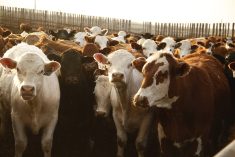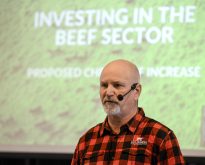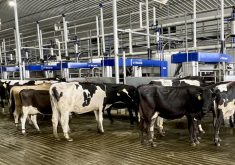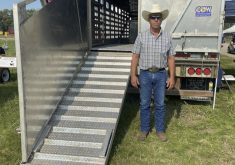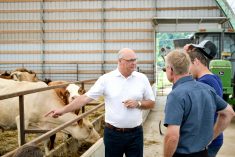If Ontario had an outbreak of foot-and-mouth disease, the financial and mental health consequences would be catastrophic.
“There’s $130 million worth of agriculture goods moved back and forth across the (Canada-U.S.) border each day. If there was an outbreak in southwestern Ontario and we were shut down, it would be in the millions, if not billions, as far as lost production,” Jack Chaffe, Beef Farmers of Ontario president, told Farmtario.
That’s why livestock producer organizations continue to ask Ottawa to invest $3.2 million a year to stockpile the estimated 2.5 million doses of vaccine Canada needs to contain a potential foot-and-mouth outbreak.
Read Also
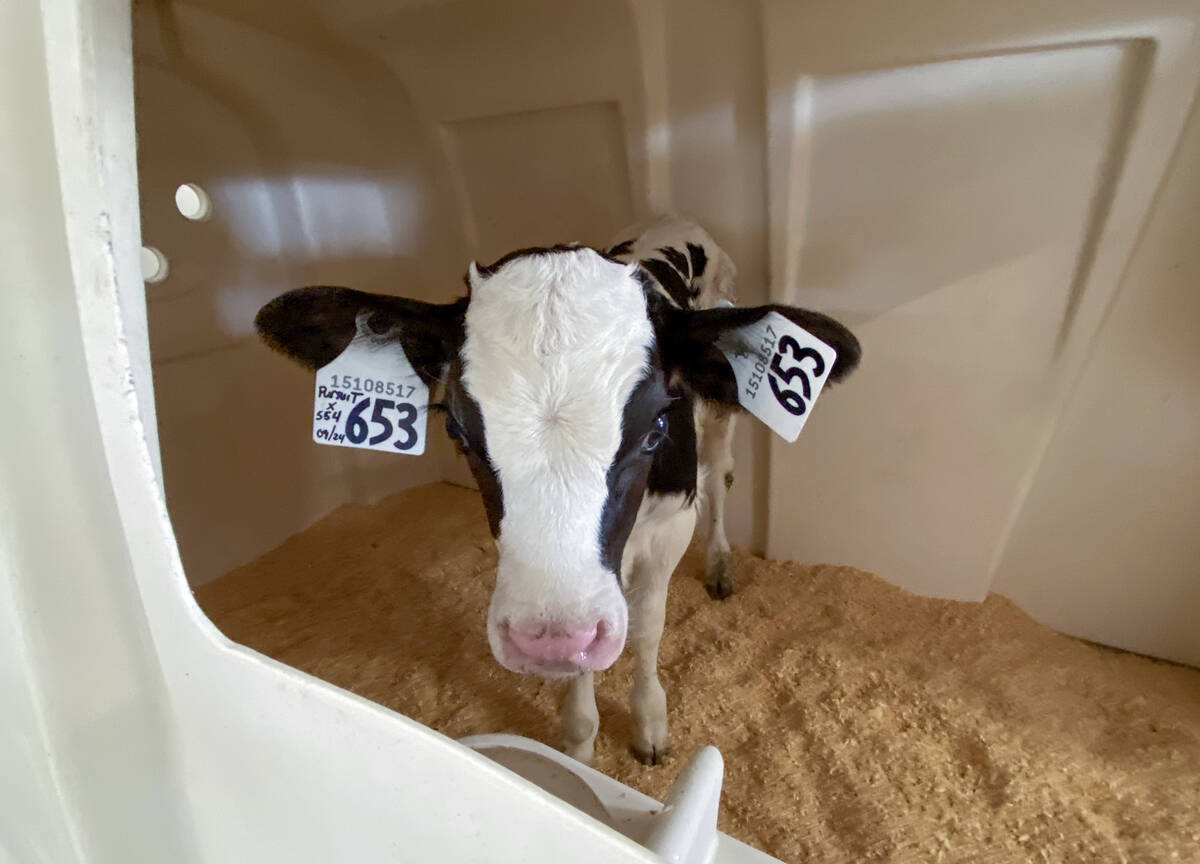
Lactanet turns methane expertise into business opportunity
Lactanet’s new fee-for-service breeding tool initiative to reduce greenhouse gas emissions in Canadian and Swiss Holstein herds will launch in April 2026.
Why it matters: Foot-and-mouth disease is highly contagious and affects all cloven-hoofed livestock. An outbreak would result in mass depopulation of animals and a significant disruption in trade.
The rules around foot-and-mouth disease response are beginning to shift, increasing the need for an independent Canadian vaccine bank.
“BSE was a turtle, an incredibly slow-moving non-infection disease,” said Dr. Leigh Rosengren, chief veterinary officer for the Canadian Cattle Association. “Foot-and-mouth disease is among the most contagious diseases in livestock.”
The vaccine bank would store an antigen rather than a formulated vaccine, with a shelf-life of years, not months, but its lifespan isn’t indefinite, said Rosengren.
“The cross-protectivity of vaccines is not very good. That’s why we call it a foot-and-mouth disease bank,” she said. “We would bank up to 12 different strains, which is part of the costs. So, it’s not just a single vaccine. It’s 12.”
The government risk analysis process would identify the riskiest strains, influencing the inventory.
“The risk is real. It could happen tomorrow. It could happen 50 years from now. We don’t know,” said Rosengren. “I liken (the vaccine bank) to an insurance policy. It is a piece of our preparedness. But every day you put it off, if the unthinkable happens in the meantime, you’re unprepared.”
While FMD is a horrific pathogen, the livestock industry is fortunate there’s a vaccine and an opportunity to prepare for a potential outbreak.
Massive research efforts into African swine fever vaccines have resulted in the development and testing of potential candidates but no approved vaccine.
“As we look forward, (the vaccine bank) could potentially be a bit of a platform or a process for preparedness,” she said. “But right now, today, the FMD vaccine is (it). It is a fiscal decision; it doesn’t require research or innovation.”
Canada has access to a fraction of the 330,000 doses in the North American FMD bank, a joint initiative of the United States, Canada and Mexico.
However, referring to the U.S. stockpile as a North American vaccine bank is inaccurate, said Melanie Wowk, Alberta Beef Producers chair.
During the Canadian Beef Industry Conference in 2022, the industry’s American counterparts clarified that Canada needs to get its house in order regarding FMD outbreak preparedness.
“They said regarding cross-border cattle crossings, ‘if you guys get foot-and-mouth and don’t have enough vaccine, we’re not going to be happy,’” said Wowk.
“You can’t blame them. That was the message they came up to deliver.”
Wowk, a Beauvallon-area rancher and veterinarian, has spent six years lobbying for a Canadian vaccine bank, saying everyone from producers to veterinarians to the Canadian Food Inspection Agency must be ready with an FMD strategy.
Biologically, the disease is unique because of the number of animals it impacts. It is highly contagious and one of a handful of named diseases by the World Organization for Animal Health.
Canada’s has FMD-free status and has remained so aside from a small outbreak in Saskatchewan from 1951 to 1952.
“There (are) many international trade rules around your FMD status,” Rosengren said. “When other countries import our beef or our live animals, they are considered the lowest risk class of product you can import.”
Countries that vaccinate for FMD are considered risky and can’t capture the premium and preferred market available to Canada.
“Canada would only ever use FMD vaccine in the case of an outbreak in Canada while we were moving to eradicate the disease and get back to our free-without-vaccine status,” Rosengren said. “We would never pre-emptively give up (that trade status) as a risk mitigation.”
A confirmed FMD case would halt all international trade from Canada, with the estimated impact of $60 to $65 billion, including trade opportunity losses.
According to current world animal health guidelines, if Canada had existing vaccinations and demonstrated no disease transmission, it would take six months to regain its trade standing and three months if there were no vaccinations.
The world animal health organization is facing increased pressure to modernize its FMD response in favour of a more complete national strategy for classifying a country’s status, due to changes to animal production and vaccine strategy successes, said Rosengren.
“We are moving our preparation and response plans to incorporate zoning, which would mean that unaffected parts of the country could get back to trade much sooner,” she said. “But that doesn’t happen on day one.”
Initially, the Canadian border closure would be the same as the outbreak investigation got a handle on cases, vaccination strategy and containment. Then it could be possible to draw a zone around the affected area.
Chaffe said the potential for mass livestock euthanasia, especially for operations with significant stock, carries a heavy toll on mental health for producers and labourers.
“In Western Canada, they talked to some of the big feedlots, and some of their workers said, yeah, they wouldn’t even want to be around if that happened,” he said. “It would be 10 times worse (than the BSE outbreak).
Rosengren said there is cautious optimism that the vaccine bank will receive funding.
“We’re hearing recognition of the importance of this from other livestock commodities and the government (CFIA),” she said.
“We are speaking with one voice and cautiously optimistic that this will come to fruition in the near future.”
— with files from James Snell, Glacier Farmmedia.







